It’s a small piece of equipment that can nevertheless have a big impact – Craig Johnson looks into how and why a clicker works when it comes to improving your shot
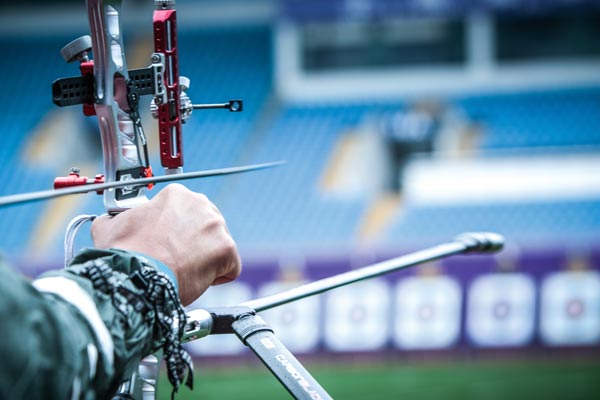
A clicker is not essential to recurve archery, but its use solves two of the most difficult problems in shot development
For many recurve archers, the clicker is one of the smallest and cheapest additions to their bow, but it can cause the most trouble and there is undoubtedly more incorrect information in circulation about clicker use than any other aspect of recurve archery. This article is not intended to cover the setting up of a clicker or how to use it, rather it will look at the science behind what the clicker does and why the correct use of a clicker can offer benefits to the archer.
A clicker is not essential to recurve archery, but its use solves two of the most difficult problems in shot development – how to execute the release without anticipation, and how to maintain the whole shot as a single action. In order to fully understand these problems we need to look at how the shot develops as beginners become intermediate archers, and also consider how the body performs motor functions and responds to its environment.
The Beginner’s Shot
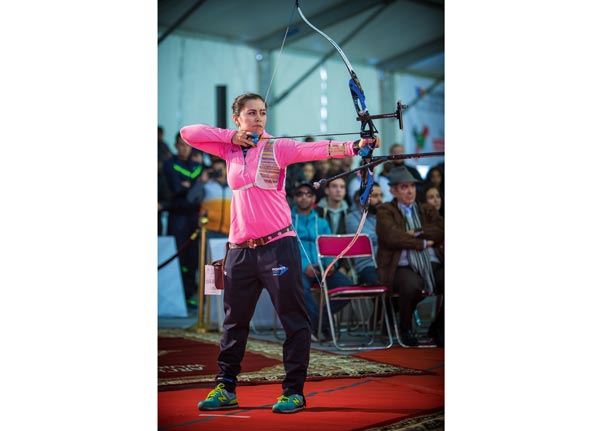
Experienced archers will be able to preserve their concentration and focus through the clicker, preventing unwanted movements creeping in
The action of shooting a bow is very complex and involves a sequence of many different movements, often employing muscle groups that are not commonly used in daily life. In order to enable beginners to progress, we break the shot down into a sequence of parts and will often focus on one or two of these when coaching.
This is exactly analogous to how we teach people to perform other complex motor tasks such as writing or driving a car. The aim is that, as the archer progresses, the shot will become more and more automatic and the individual parts will flow into each other to give a smooth execution. Compare how a young child writes their name to how you sign a form and you will see a really good example of this progression.
The Shot as a Single Movement
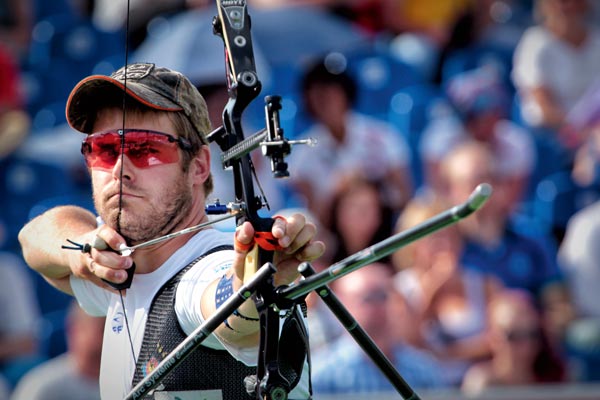
Clickers train a reflex response in archers, which removes a lot of the conscious processing required for the release
The ultimate aim of shot development is for the shot to knit together into a single movement. Ideally the shot begins with a period of focus on the target and becomes more automatic as it progresses. As the archer approaches full draw, the feedback from the motor part of their nervous system should continually reinforce the feeling of a well-executed shot and they should get more and more relaxed until at full draw they approach a state of intense internal focus, usually centred around the muscles between the shoulder blades. The problem of shooting a recurve bow is that, while not impossible, it is very difficult to shoot the bow without compromising this state of relaxed internal focus.
This means that for many archers, the shot can only reduce to two parts, the part before the loose and the part after the loose. The transition from one to the other forms a split at the most important part of the shot and this can easily become a pivot point to which problems attach. The primary aim of the clicker is to enable the archer to bridge this gap at the heart of the shot and so to more easily perform the shot as a single movement. This brings with it a more robust shot with increased accuracy that is more likely to be properly executed under the stress of competition.
Planned Movement and Reflexes
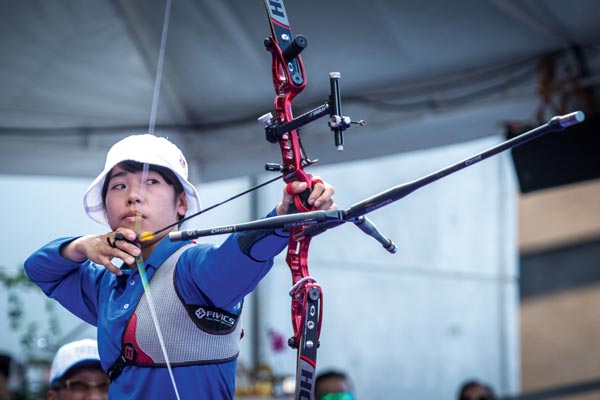
One of the functions of the clicker is to bridge the gap between ‘pre-loose’ and ‘post-loose’ focus and actions
When the brain decides to move the body in a deliberate way, such as when picking up an object, it first loads a movement plan into the appropriate parts of the nervous system. The more complicated the movement and the more expert the person carrying it out, the longer the plan takes to fully load. It can take up to two seconds for this plan to be fully loaded. In archery, the period of loading should be carried out immediately prior to the execution of the shot and is typically seen as a period of “still-eye” where the archer makes no movement and focuses on the centre of the target. As novices progress, they develop this planning period prior to the shot, but it usually only progresses as far as full draw.
The loose and follow through is treated as a second activity and this is why many improving archers spend a long time at full draw before completing the shot. This is detrimental to the shot for a number of reasons. The time spent at full draw with the bow under tension is tiring and will reduce the number of arrows that can be shot. Planning the second movement has to occur at precisely the time when the archer should be the most relaxed and focussed on maintaining muscle tone, and this planning disrupts that relaxed focus. The time at full draw allows unwanted movements to creep in that anticipate or unbalance the shot.
Deliberate movement on its own is too slow to allow many of the functions necessary for daily life, not to mention sport. When a tennis ball is served at Wimbledon, it typically takes about 350 milliseconds to travel the length of the court. There is no way that this could be returned if tennis players had to rely on planned movement so they need another way to deal with this. This second kind of movement is a reflex response system. Here the motor system responds to an external stimulus and can do so very quickly. Reflex times vary depending on the stimulus, but auditory stimuli are among the fastest. Typical reflex responses to an audible stimulus are around 170 milliseconds and these can be even faster in trained athletes – as fast as 100 milliseconds.
The Role of the Clicker
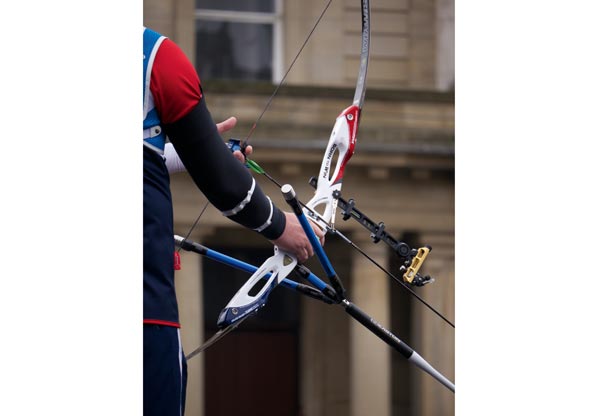
A clicker is a small addition to a recurve bow but can make a big difference
When using a clicker, the archer carries out the shot with their focus and relaxation building to full draw. Once the bow is close to full draw and only if the shot is proceeding well, sensitivity to the sound of the clicker becomes part of the focus of the shot. The loose is a trained reflex response to the click stimulus and the arrow is typically shot within 100 milliseconds of the click. This means that the loose is performed as an involuntary reflex response to the sound of the clicker. The advantages of this over shooting without a clicker are that the shot can be executed while preserving the relaxation and focus of the archer, and that there is not enough time between the click and the execution of the shot for unwanted movements to occur.
Summary
Clicker shooting is a very useful technique for a recurve archer to master. When used properly it has the advantages of unifying the shot into a single movement, preserving the relaxed focus of full draw through the shot and preventing the addition of anticipatory or other unwanted movements to the shot.
This article originally appeared in the issue 113 of Bow International magazine. For more great content like this, subscribe today at our secure online store www.myfavouritemagazines.co.uk

